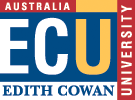COURSE INFORMATION
Disclaimer
This course information may be updated and amended immediately prior to semester. To ensure you have the correct outline, please check it again at the beginning of semester.
| B37 Bachelor of Communications | |||||||||||||||||||||||||||||||||||||||||||||||||||||||||||||||||||||||||||||||||||||||||||||||||||||||||
INTRODUCTION The School of Communications and Multimedia offers a course designed to enable students to succeed in today’s rapidly changing society. Its undergraduate program focuses on the theoretical and practical dimensions of communication and includes eight major streams of study comprising Advertising, Film and Video, Interactive Multimedia Technologies, Journalism, Mass Communication, Media Studies, Photomedia and Public Relations. The School offers students a caring, supportive environment with expert staff who are committed to quality teaching and research. The undergraduate program comprises 24 units and normally requires three years of full-time study (or part-time equivalent) to complete. However, exemptions may be granted to students who have successfully studied in another program allowing for more rapid completion of the course.
The Bachelor of Communications aims to provide graduates with a range of Communications skills, and to prepare them for work in Communications professions. Students specialise by taking either one or two majors from a choice of:
|
|||||||||||||||||||||||||||||||||||||||||||||||||||||||||||||||||||||||||||||||||||||||||||||||||||||||||
| |||||||||||||||||||||||||||||||||||||||||||||||||||||||||||||||||||||||||||||||||||||||||||||||||||||||||
Last Updated - Higher Education: 11/18/2004
